Since the closed beta for The Settlers: Kingdoms of Anteria ended in
early 2015, the game has gone through a lot of changes - enough, in
fact, that it's become a new franchise entirely. Coming on August
30 for PC, Champions of Anteria puts a unique spin on
conquest-driven real-time strategy, challenging you to liberate the
land of Anteria by using the skills of a small squad of heroes.
An open letter from the developers at
Ubisoft Blue Byte explains the situation:
- Dear The Settlers fans, Over the
last few months we received a lot of questions about The Settlers:
Kingdoms of Anteria. Today, we have an important announcement to
make. When we ended the Closed Beta of The Settlers: Kingdoms of
Anteria in January 2015 we received a lot of feedback, and we want
to thank all those of you who shared these valuable insights with
us. We took time to read through comments from different sources,
such as social media, forums, emails, and preview articles. We also
took time to reflect on our ambitions for the project and where we
wanted to head with it. After much discussion, we made the decision
to steer this project in a new direction, meaning The Settlers:
Kingdoms of Anteria as you know it no longer exists. However, we
are excited to announce that we have been working hard to create a
new game, a challenging real-time strategy experience that we are
revealing to you today, Champions of Anteria. To be clear, the game
isn't part of The Settlers series, but a new adventure that will
further explore the lands of Anteria. Champions of Anteria is a
tactical RTS with Active-Pause Mode in which you can fight with
three of five Champions in diverse and challenging battles. Each
Champion is aligned to a magical element, and players must
strategically choose the powers they bring into a battle, as
interactions between affinities constitute a very important part of
the gameplay. Champions of Anteria features a completely new
narrative and adventure for players to enjoy. With a renewed focus
on story, the economic and logistic features are revised and are
handled via a homebase management system where you can craft items
for your Champions and unlock new abilities. For those who are
wondering about the classic The Settlers series, rest assured that
The Settlers is alive and kicking! We want to thank all of you who
enjoy The Settlers games for your ongoing support. Making games is
our passion, and we can't wait to share Champions of Anteria with
you when it launches on August 30. For more information about
Champions of Anteria, please visit the official site.
-Your Blue Byte team*
We also had the opportunity to chat with Champions of Anteria's
creative director, Mihnea Dragoman, who filled us in on the shape
the new game is taking.
Can you give us a general idea of Champions of Anteria and what it's about?
Mihnea Dragoman: Champions of Anteria is a new single-player strategy
game. It really tries to focus on the tactical side of a strategy
game, so it goes down to the roots of what makes a strategy game
great. We do this by adding the feature of Active Pause, which
means that at any time, you can stop the action by pressing a key,
and you can revisit your plan and tweak it based on the rules of
engagement, or just read the environment better.
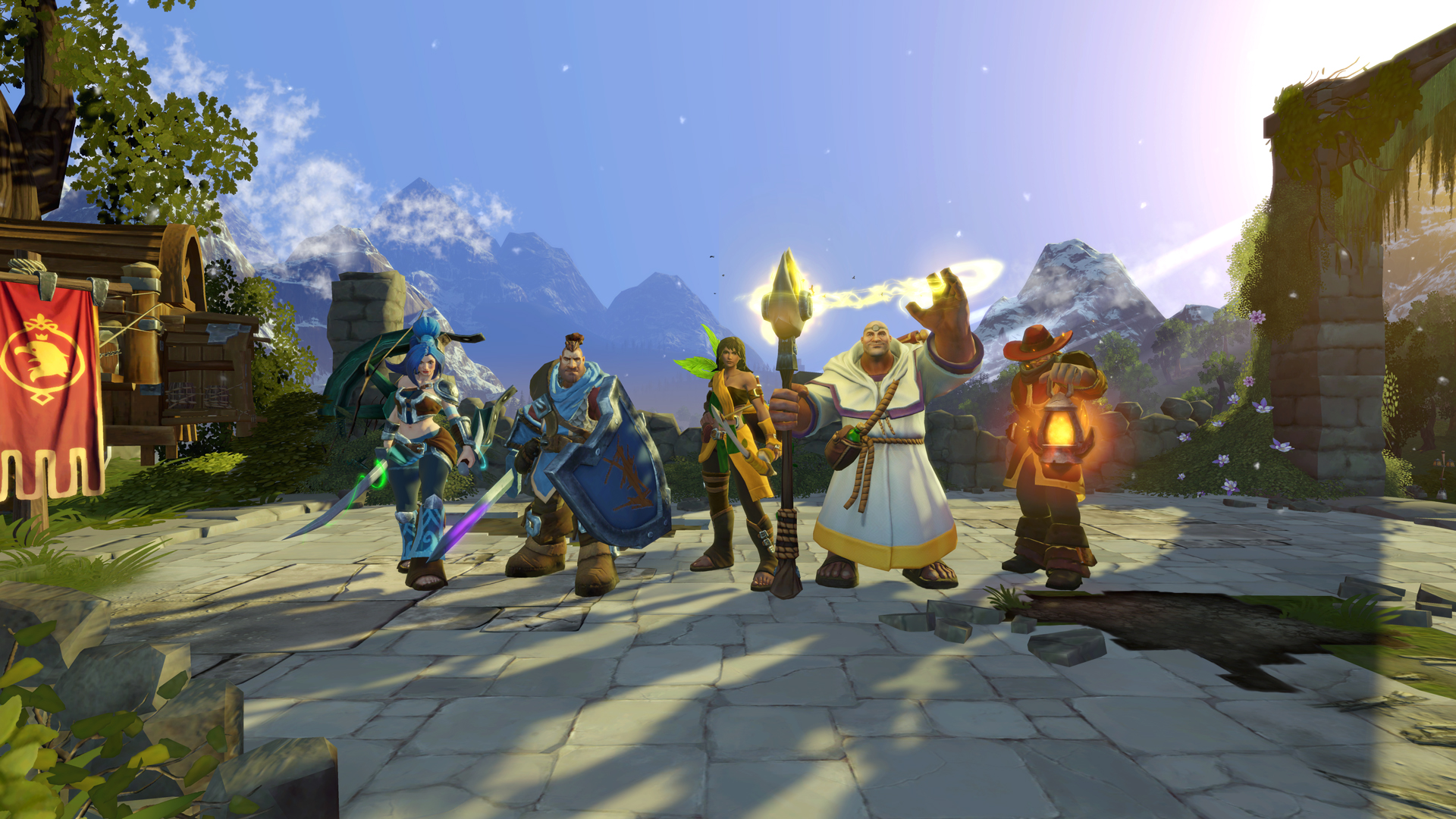
Our game also has a strong focus on narrative, it has a quite good narrative element, which puts the Champions in the middle. The story follows the five Champions as they come back to Anteria, their homeland, and find it in ruins. They find it at the mercy of three warring factions, and the whole story is how the Champions can help the common people and liberate the land for them.
The setup of a three-heroes-at-a-time RTS seems unique. How did that design come about?
MD: It came along quite naturally. The core of the combat is based on magical elements. We have five magical elements in the game - fire, metal, nature, lightning, and water - and they work in an extended rock-paper-scissors system. Each of the units in the game are aligned to one of them, and all of our five Champions has an alignment to one of these elements, and we really thought about how interesting it would be to make players choose the best composition to bring to a fight. Because the enemies would have these elements, and it's a very nice way of getting players to think their way through a fight. Not just maximizing their damage, but also how to pair one character against another.
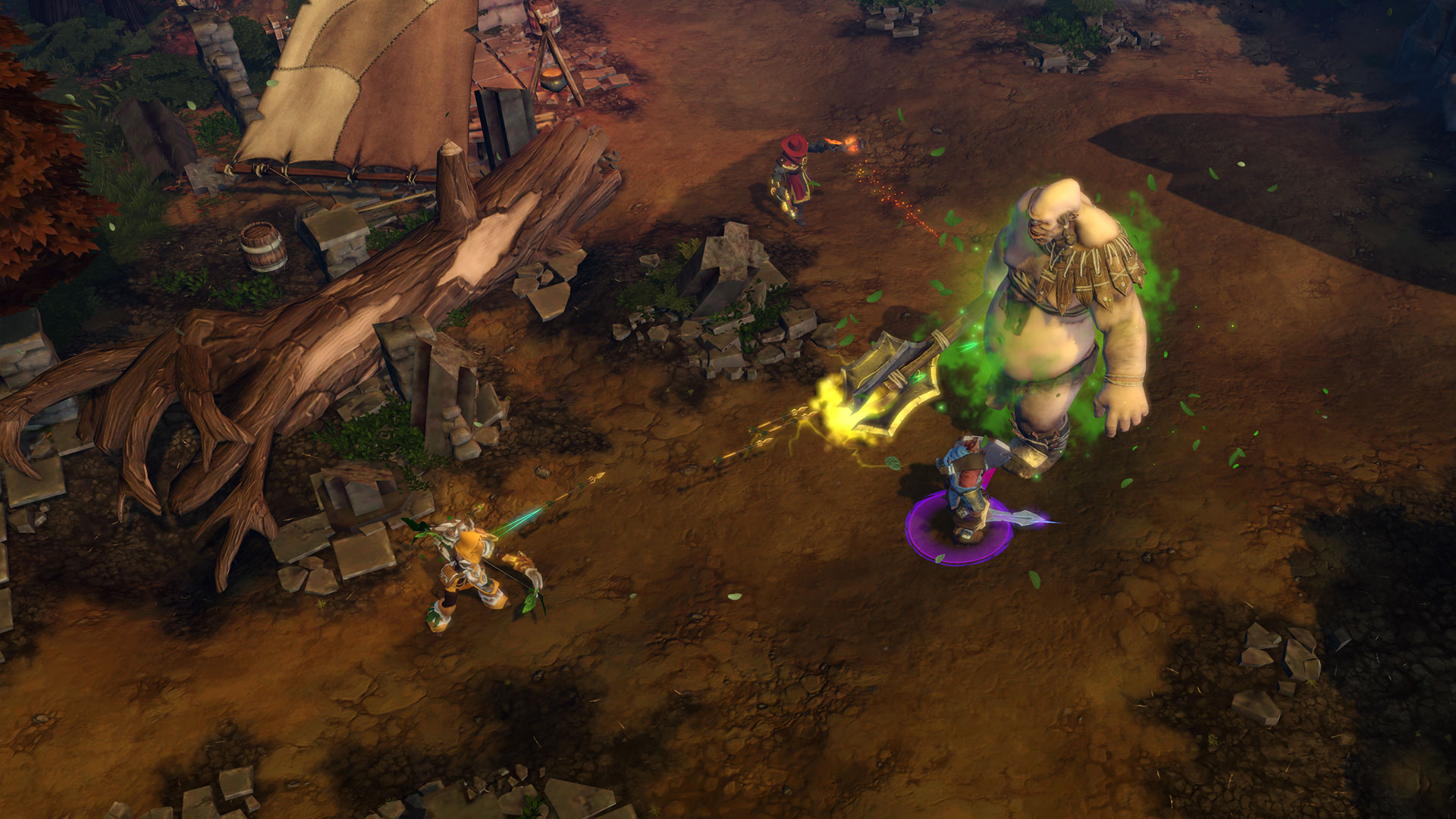
Is there symbiosis between the player characters? Are their abilities complementary?
MD: Yes, in a way. For instance, with the element system, there are abilities from several Champions that can either protect you from damage by a certain element, or can change your element from one thing to another. So for instance, our monk character can change his party to all be lightning for a period of
time, and then they will do a lot of damage against a water opponent. This is how they will combo off each other. To go more into detail, we wanted to give each Champion a different gameplay focus, so they each work a bit differently. For instance, our archer tags arrowheads on each target, and then has abilities that
can detonate those arrowheads and inflict different conditions, either damage, or blindness, or whatever. Our knight has kind of a rage bar mechanic, which is called vigor. He pools energy up the more he stands in a fight, and then he can consume it to deal extra damage with his abilities. Each Champion plays differently. Our monk has a system based on a number of bells he can gather and then use to power bigger blessings on the battlefield. He can gather up
to three bells, and then there's bigger miracles he can do with the three bells.
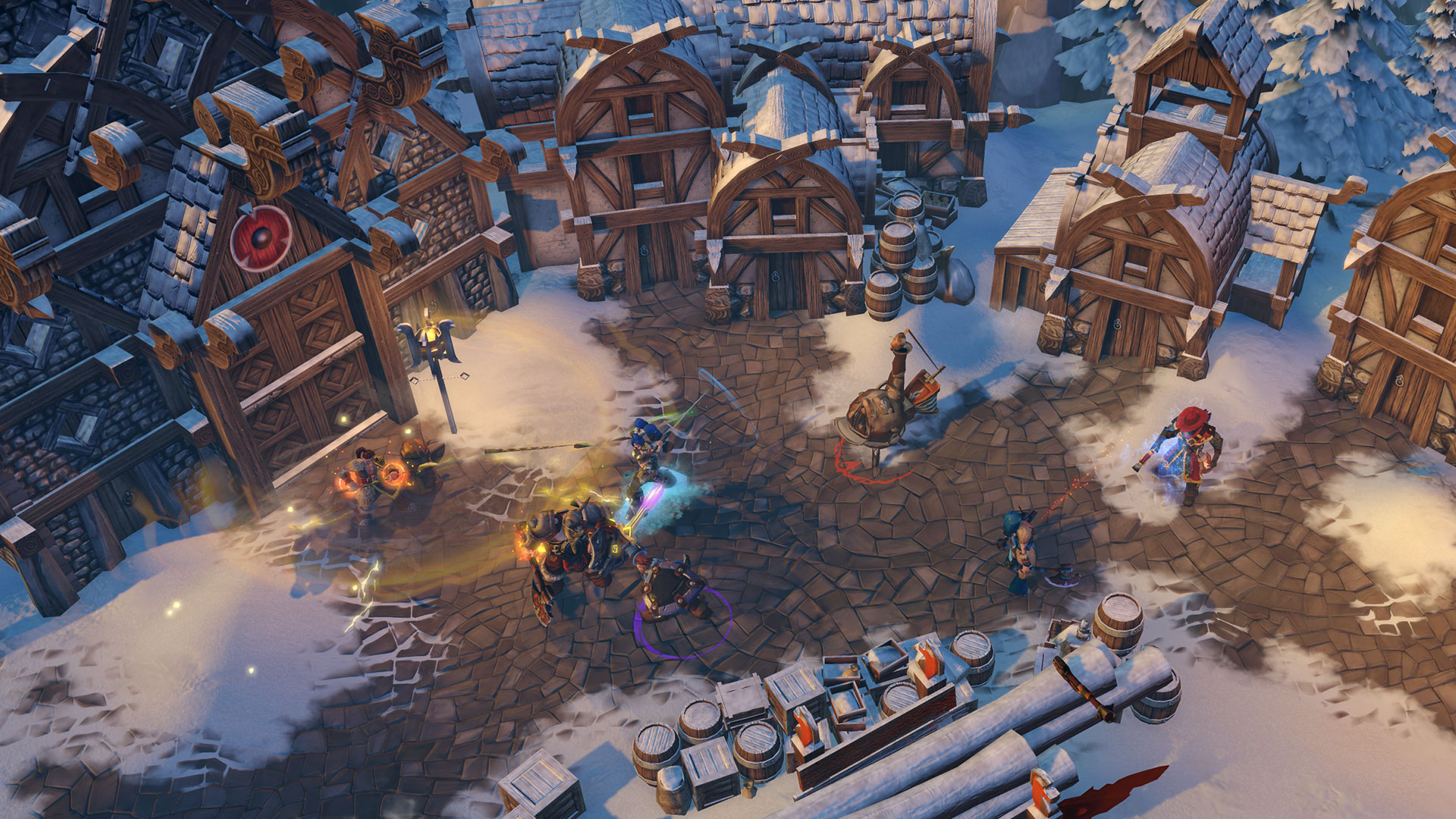
How does village management work?
MID: The village is the Champion's base of operations. It has a system of resource management; we have a few buildings that you place there, but it's more of a slot-type system. You have a few places where you can place buildings, and it's a matter of how you get the most out of it, and that will get a lot of resources for you, and the resources feed into the crafting. So the major focus of the village is crafting. Those resources feed into how you create potions, or
devices, or gear for your Champions.
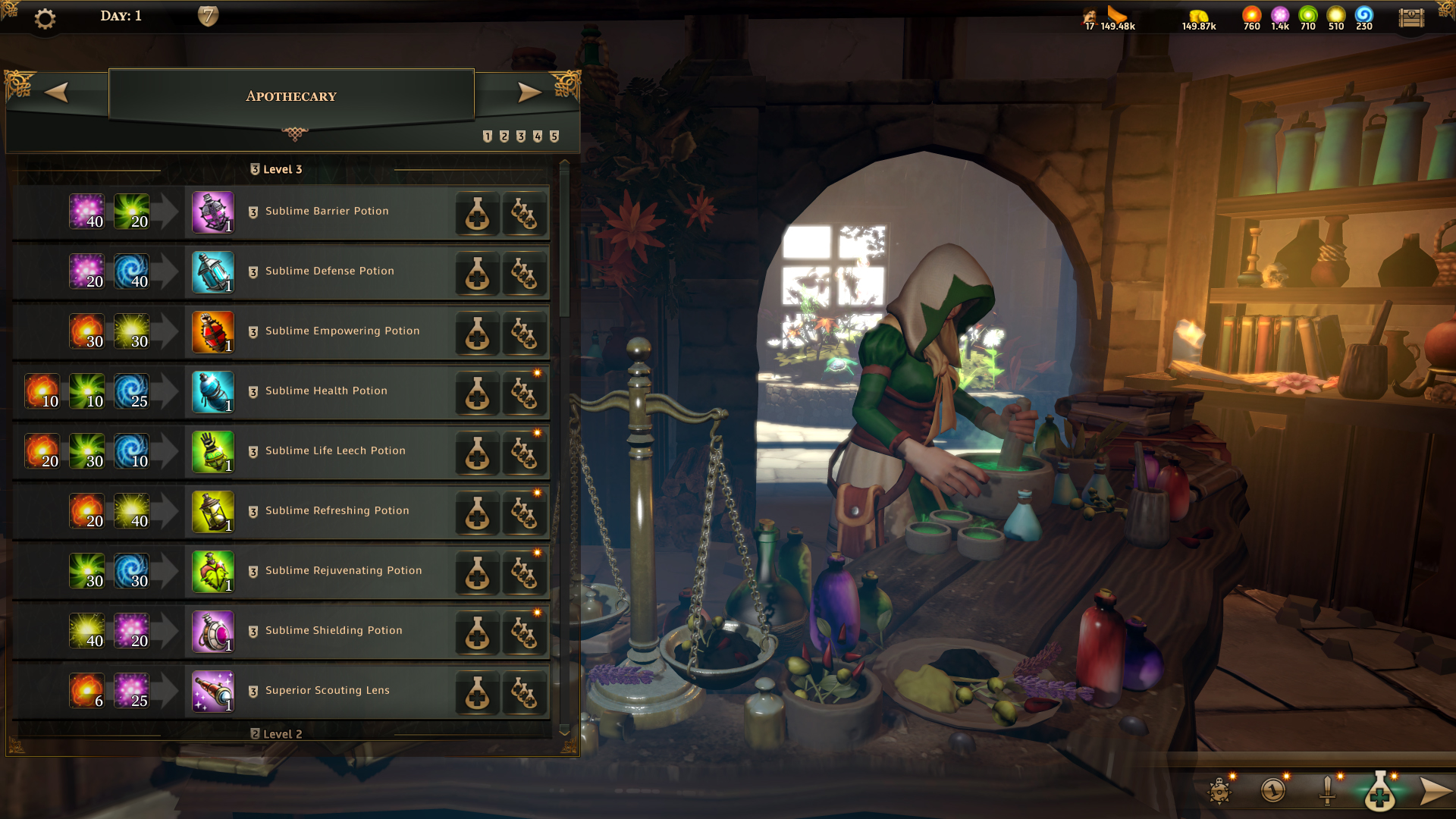
Can you upgrade the village over time?
MD: The village is something the Champions find early in the story. It's a ruined castle at the top of a hill with a few scattered buildings. The more you progress through the game, the more sectors around this castle you get to unlock, and each of them can hold up to six buildings or so. The castle also gets built up as you progress through the game, so the more you unlock, the more you build, the stronger the village becomes, and it also looks more impressive. We also put a lot of effort into making the village look alive, so the more you build these buildings around the castle, the more you'll see people walking around, a few soldiers, and cats and dogs and things like that.
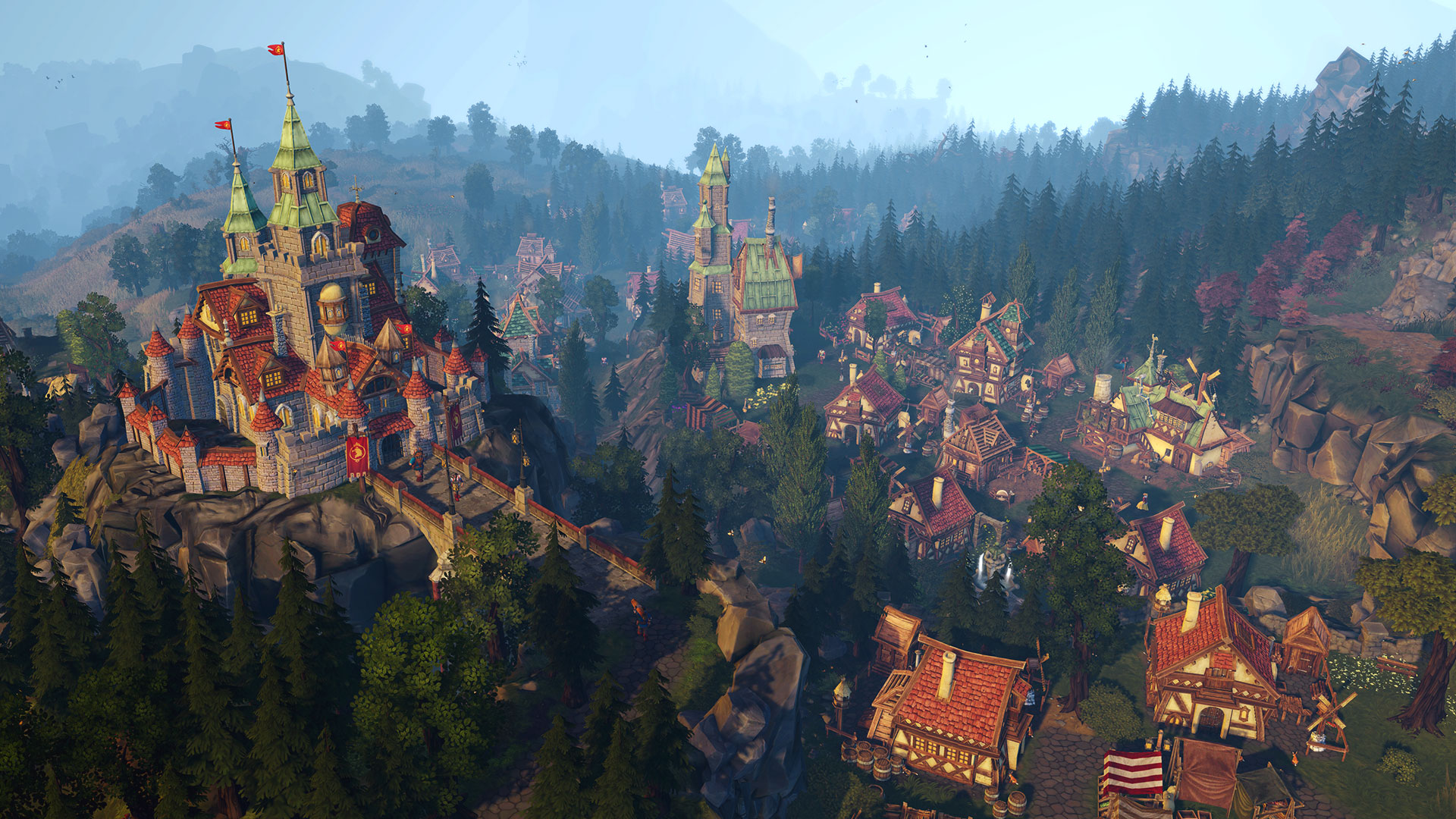
Going back to the RTS combat, what does the flow of a mission feel like?
MD: Each mission has one main objective and one secondary. The secondary objective isn't mandatory, but gives you more rewards at the end. The primary objective changes how you play the map. We have different objectives, ranging from you attacking a fortified enemy position, to going to rescue a spy behind enemy lines - and you need to be a bit stealthy, and not attract a lot of attention, and try to avoid fights as much as possible - to just trying to
fend off a very big creature that comes to defeat your small settlement on the map. It uses typical RTS controls, so RTS players will feel right at home with this, but it is more on the tactical side. It's more about trying to avoid the fight if possible, and just accomplishing your main objective as optimally as possible.
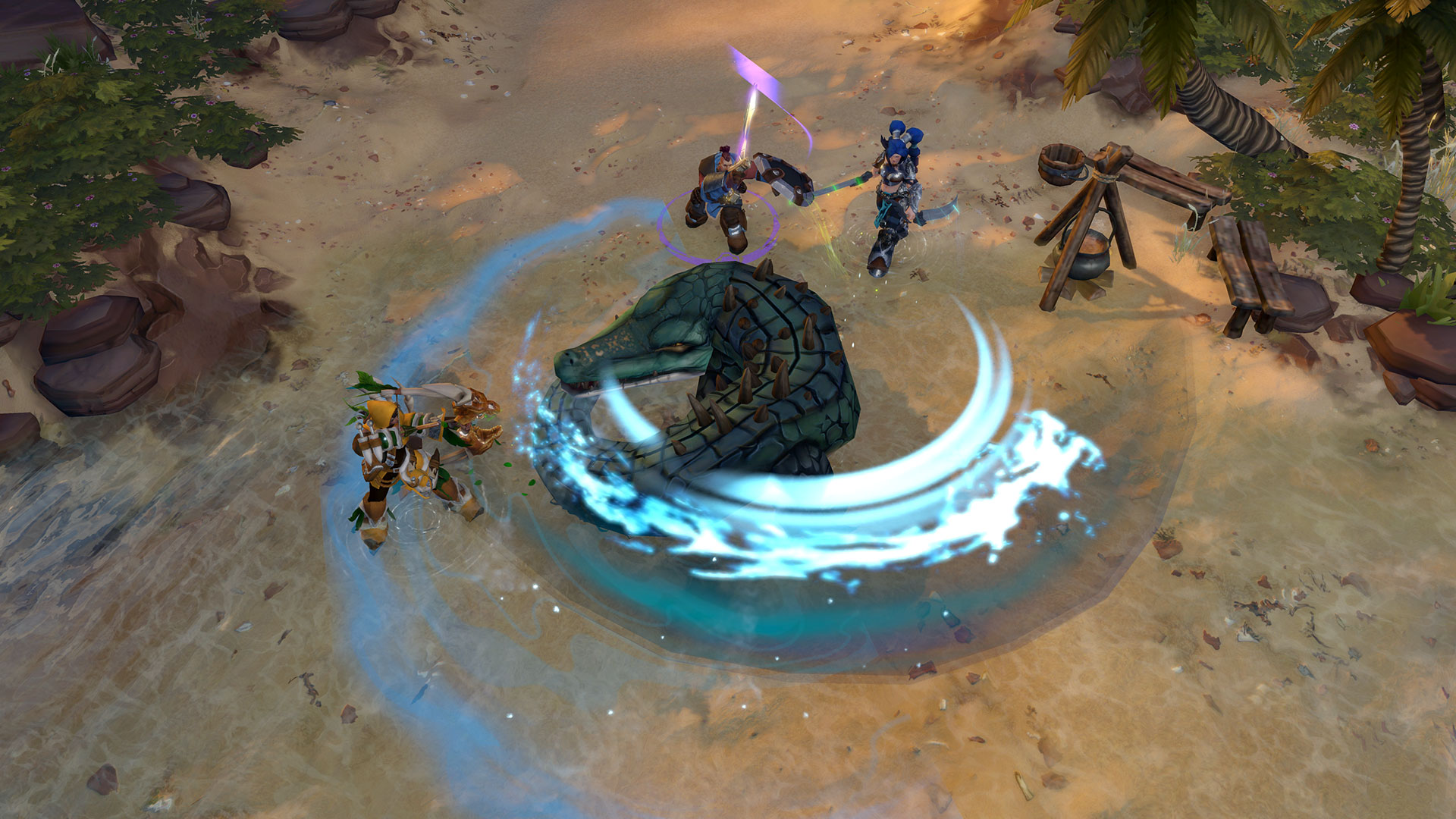
Is there anything we haven't touched on that's important to get across?
MD: I'd really love to talk about one element I think we missed, which is our world map. The game does not have a linear campaign to it, so it's not one mission after the other. We have a map with territories on it, and you conquer it by going from one territory to the next adjacent one. You can go in any direction you want, and also you can fight whichever of the three factions you want first, or you can fight them all at the same time. Each faction rewards you with new abilities for your Champions, and also new crafting recipes, which mean better gear. It impacts how you will further progress and encounter the other factions afterwards.
We really expect players who play differently to have a different experience, and the way they experience the rest of the game and the rewards that they get will feel different.
How many territories are available from the start?
MD: At the start is just a choice of two, but the whole map is 26 territories. One thing to mention is that the enemy factions themselves are fully automated, so they have their own agenda and do their own stuff. So they might attack you, and they might even defeat you. We have some sort of catch-up mechanic that will allow you over time to of course come back. The idea is that the map should feel alive for players, and no matter what you do, the factions will do their own thing and will level up independently of you, so your choice really matters in terms of who you want to attack first, and who you want to engage. The world map is actually turn-based, so for each day that passes, you can play one of the RTS missions. Each territory, that's how you conquer it - by playing one mission. And those missions will either be offensive in nature if you're attacking someone, or defensive if you're being attacked and you decide to defend the territory actively. This goes into what I was saying earlier about the different kinds of objectives, the main objectives you get. When you attack, you're in control, you've got the initiative, you can attack certain things in any order you want, you can take your time. But the defensive objectives are more
about time pressure, and waves, and surviving.
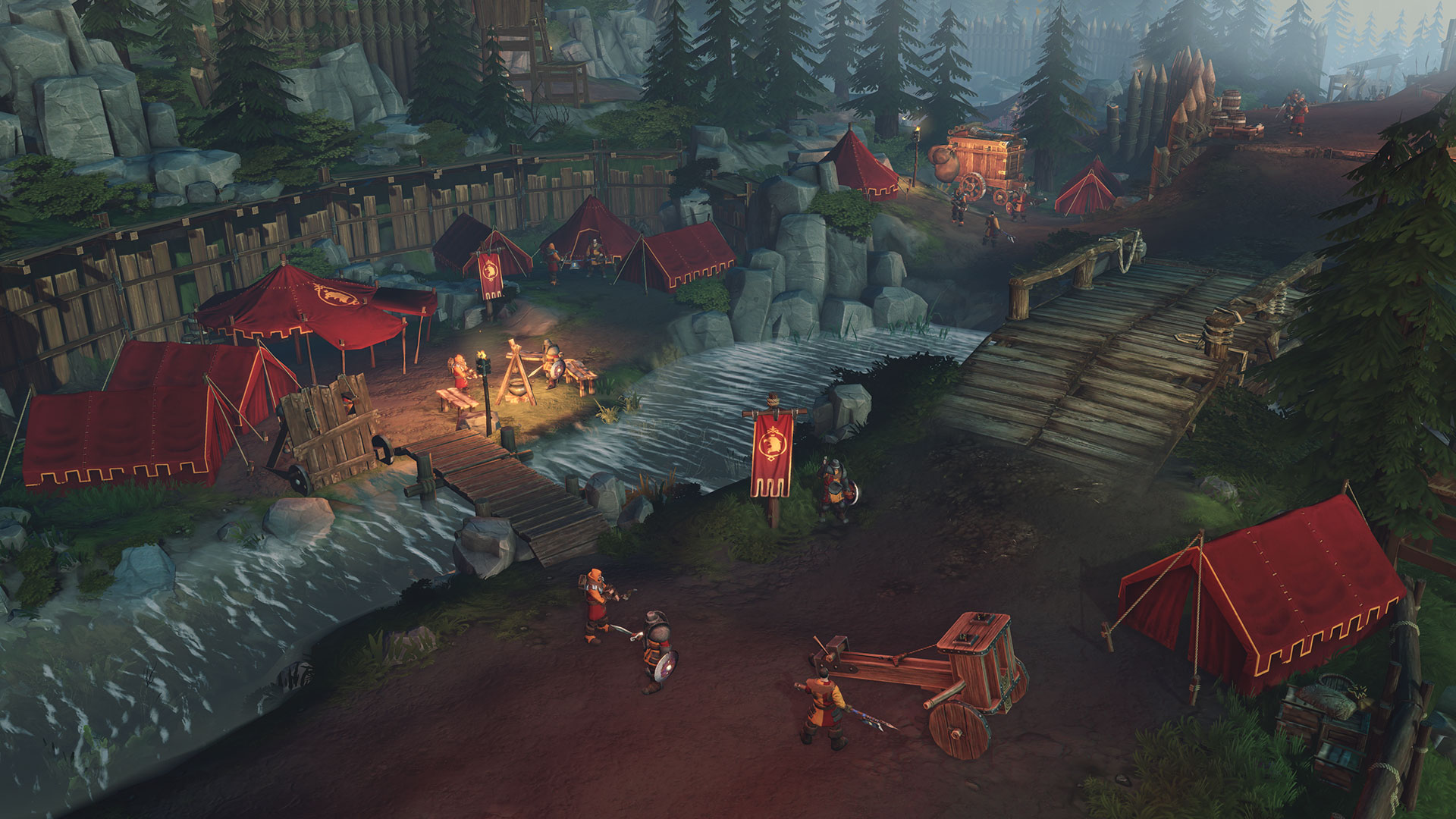
Does each territory have a different difficulty or level setting?
MD: The neutral territories, the ones that are not owned by any of the factions on the map, have their own level. And that should be smooth for players to start the game, but the more you go on, the more you'll encounter territories that are owned by another faction. And the difficulty of those maps is directly linked to the level of the faction itself. If you let them level up too much, you'll have a difficult time trying to conquer them, so you should try to nibble a bit at all the territories of all the factions to keep them in check, because the more territory they have, the faster they'll level up.
What determines enemy movements on the world map?
MD: The factions have an aggressiveness statistic, which we don't necessarily show to the player. Each of them feels a bit more aggressive or not, which determines how often, in how many turns do they attack something new, and they decide if they should attack the player or another faction based on where the player is in terms of their progression. If the player is having a hard time, they try to fight against each other more, while if they see that you're holding your own, they'll attack you more.
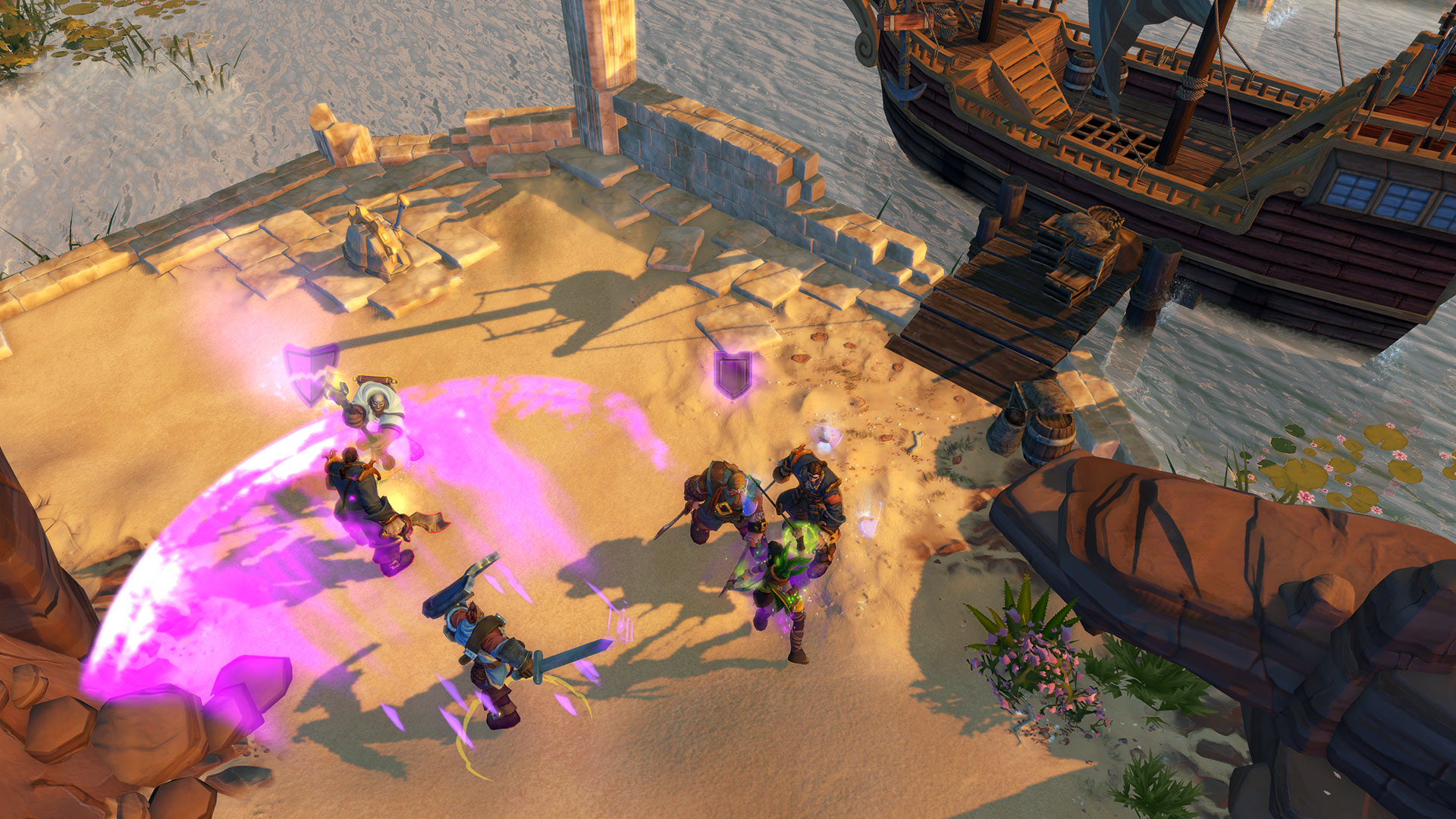
There's one more thing. One other really strong point we've pushed in our game is
variety. All factions have their own roster of units, so I think we have above 200 individual, unique units in total that players can fight against. And also, each map is linked to one of three settings - green land, north land, desert. When you click on a territory to attack it, you don't necessarily get the same map every time. We have a randomization system that tries to always push you to see a different map, or a different objective, a different combination of primary and secondary objectives, as much as possible. You should not do the same thing twice ever in our game. Champions of Anteria will be available for $29.99 via Steam and Uplay on August 30.




